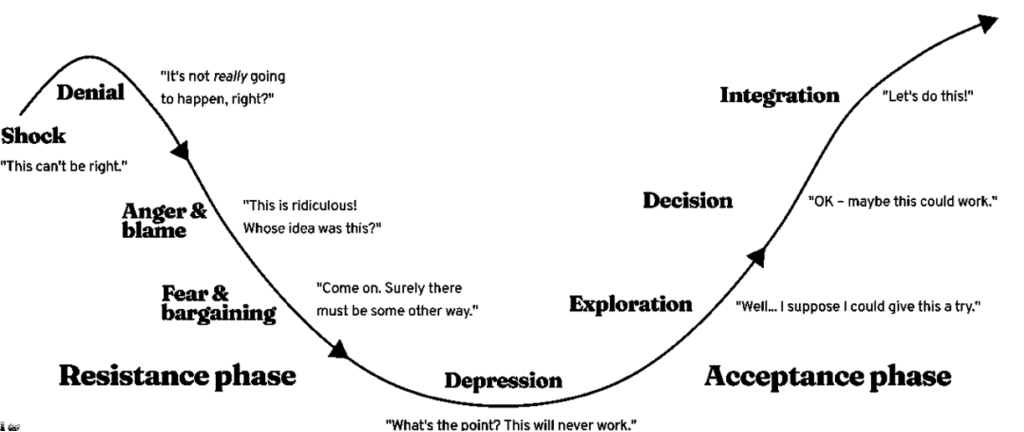Change breaks people before it makes them. The Kübler-Ross Change Curve shows us exactly how this breaking happens: denial, anger, bargaining, depression, and finally acceptance. Most leaders pretend this emotional chaos doesn’t exist. They announce a change and expect immediate compliance.
That’s not leadership. That’s wishful thinking.
Smart leaders know the curve exists, and they prepare for it. When your star performer starts questioning everything, that’s not rebellion—that’s stage two of a natural process. When your usually optimistic team lead goes quiet, that’s not disengagement—that’s stage four.
The curve doesn’t care about your timeline. It’s not linear or predictable, and people don’t move through it step by step. Some skip stages. Others cycle back. Your job isn’t to rush them through it.
Your job is to guide them through it.
The Kübler-Ross Change Curve

Here’s what works:
During denial, communicate relentlessly. Not once, not twice, but until reality penetrates the shock. Clear, transparent communication is key to overcoming the challenges of the denial stage.
During anger, listen more than you speak. Validate the frustration without caving to it. Remind yourself that a range of emotions is common, and providing the guidance your employee needs to process the change can help them graduate from the emotion.
During bargaining, focus on discussions. Let them explore alternatives, but keep steering toward the inevitable.
During depression, provide support systems. This is where people quit—mentally first, then literally.
During acceptance, celebrate momentum. But don’t declare victory too early. People may continue to experience echoes of all of these stages as they reconcile the past with the present.
The companies that scale through change aren’t the ones that avoid the curve. They’re the ones who surf it. They know emotional turbulence precedes breakthrough performance.
The Kubler-Ross Model helps leaders guide teams through change by addressing emotional responses, supporting morale and fostering engagement. It turns resistance into readiness and transforms uncertainty into growth.
Change will happen with or without your permission. The curve will run its course with or without your attention. But outcomes? Those depend entirely on how well you navigate what’s predictably unpredictable about human nature.

